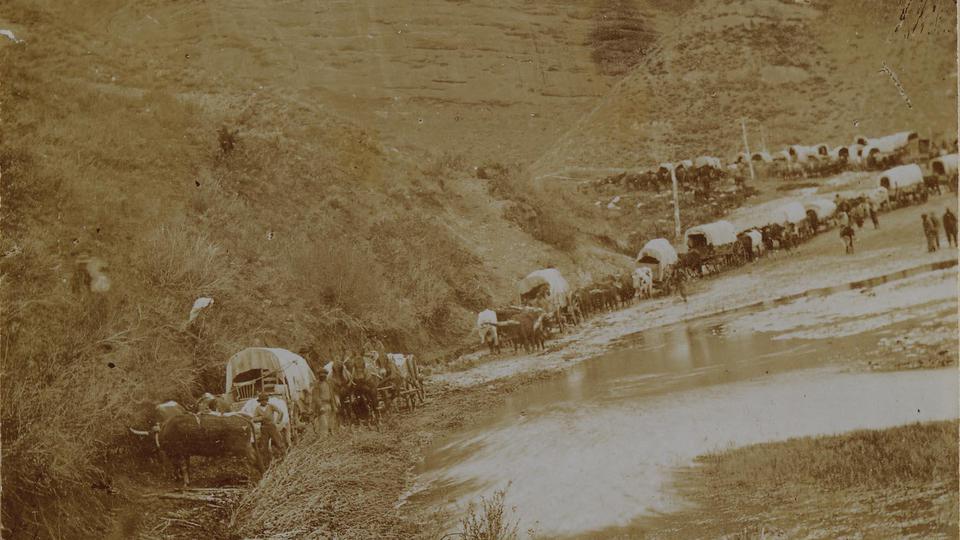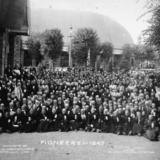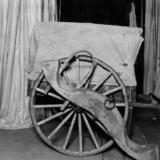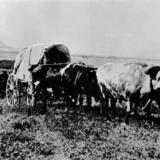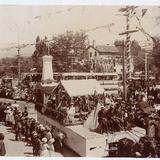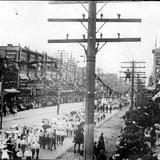Each year on 24 July, Mormons all around the world commemorate the arrival of the first company of Mormon pioneers to the Salt Lake Valley in 1847 with parades, concerts and other festivities. The festivities honor the sacrifice of tens of thousands of pioneers and are a reminder to Mormons of their faith.
| Pioneer wagon trains wind through Echo Canyon in 1865. 2009 Intellectual Reserve, Inc. All rights reserved. | 1 / 6 |
More than 160 years ago, several hundred Mormons began a migration of over a thousand miles to reach the valley of the Great Salt Lake. The first company of pioneers was led by Church President Brigham Young. There were hardships along the way, violent weather, trails forged through hostile terrain, personal sacrifice and many deaths.
The 19th-century Mormon migration beginning in 1846 in Illinois, then through Iowa and Nebraska and eventually to a place of refuge in the Rocky Mountains, was one of the most remarkable episodes in the history of the United States’ great western migration. Unlike the thousands of migrants streaming west to California and Oregon looking for a better life, the Mormon pioneers migrated involuntary — the result of expulsion from Illinois and Missouri by hostile neighbors. Later, the Mormon pioneer trail would be filled with converts coming from Europe. (Read detailed history of Mormon Pioneers on Church History Website)
President Thomas S. Monson, then second counselor in the Church’s First Presidency, noted in 1988:
“That first trek of 1847, organized and led by Brigham Young, is described by historians as one of the great epics of United States history. Mormon pioneers by the hundreds suffered and died from disease, exposure or starvation.There were some who, lacking wagons and teams, literally walked the 1,300 miles across the plains and through the mountains, pushing and pulling handcarts. In these groups, one in six perished.”
In an 1870 article in the Deseret News, President Brigham Young recounted the trek:
“In April 1847 …one hundred and forty-three pioneers took up the line of march with our ox teams, with our cows and with what we could pick up. We made our own roads from day to day and week to week.…When the wagons were in the mud my shoulder was one of the first that ever lifted the wagon wheel; we pulled them out of the mud, sought our camping places, cut our roads through these canyons, and located on this place …”
As the first group of Mormon pioneers reached the SaltLakeValley in the summer of 1847, Brigham Young looked out over what was then a barren, dry desert and declared, "This is the right place."
Abigail Smith Abbott, a pioneer mother who migrated in 1849, described her family’s journey:
“On the sixth day of July 1849, I gathered my children together, eight in all, and one son-in-law, and started for the valley of the mountains in George A. Smith’s company. As we had to walk across the plains, I made moccasins for my children to wear, as I did not know when I would get shoes for them.” (Read other diaries and letters by pioneers)
Regarding the original pioneers, late Church President Gordon B. Hinckley remarked at a Pioneer Day Commemoration Concert in 2001:
“I have felt that we must never permit ourselves to lose sight of the great and singular achievements of those who first came to the valley in 1847. They came not for riches or gold, but rather to find a place where they could worship God under the revelations which are the foundation of this work.”
Under Brigham Young’s direction, an estimated 70,000 Latter-day Saints made the difficult journey to Utah between 1847 and 1869, when the transcontinental railroad was completed. Building on the foundation the pioneers built, the Church today has grown to over 13.5 million members throughout the world.
Celebrations to commemorate the arrival of the 1847 pioneers and other pioneers take place in Utah as well as among smaller gatherings of Latter-day Saints throughout the world. Pioneer activities include parades, reenactments of the trek, dressing up in period clothing and remembering pioneer ancestors.
